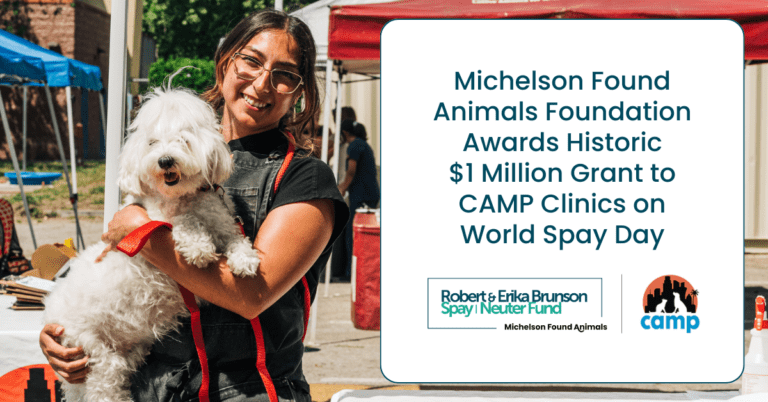All About Ringworm in Dogs and Cats

This article contains affiliate links. Found Animals receives a portion of the proceeds from every purchase made after clicking on the links. These profits go toward saving more homeless animals!
Ringworm is a stubborn infection that no one wants, but unfortunately anyone can catch. You can find ringworm in dogs, cats and people alike. But get this: It’s not actually a worm. So what is it? How can you treat and prevent it? Here’s our guide to ringworm in cats and dogs!
What Is Ringworm?
Dermatophytosis is the technical term for ringworm, a fungal infection that can affect one’s nails, skin or hair. As stated previously, you can find ringworm in dogs, cats, people and other mammals. It’s more common in young animals than adults and in cats, it’s more likely to be diagnosed in long-haired breeds than short-haired breeds. Animals can catch it from humans and vice versa.
What Are Ringworm Symptoms?
There are many ringworm symptoms, although sometimes carriers of the fungal infection are asymptomatic. This means that while they may carry dermatophytosis and be contagious, they don’t actually show any ringworm symptoms. Here are some of the symptoms of ringworm in dogs and cats:
- Itchiness
- Patchy or circular alopecia (hair loss)
- Broken hairs and a breakdown in the fur’s quality
- Ulcerated or red skin
- Darkened skin
- Scaly skin (dandruff)
- Crusting of the skin
- Lesions (kerions)
- Brittle or misshapen nails
- Inflammation of skin and nail folds
If you or your pets show any ringworm symptoms, you should call your vet or doctor ASAP!
Ringworm Causes: How Do You Get Ringworm?
Wondering how do you get ringworm? There are a variety of ringworm causes. Ringworm in dogs and cats is frequently caught through direct physical contact with other animals or people who have the infection themselves. Again, ringworm in cats, dogs or people may or may not show any symptoms. Dermatophytosis can also spread through contact with contaminated objects, such as crates, brushes, bedding and toys. Ringworm can even live in soil! Animals are more likely to catch the infection if they are young, live in close quarters with other pets or have a compromised immune system, wounds or fleas.
How Do Vets Diagnose Ringworm in Dogs and Cats?
There are a few ways to diagnose ringworm in dogs and cats. Your vet might do a fungal culture of plucked fur or skin scales. They might also perform a skin biopsy or examine hair under a microscope. Lastly, your vet might also use a Wood’s lamp to identify infected areas on your pet’s body.
What Is the Recommended Ringworm Treatment?
Ask your veterinarian which ringworm treatment they recommend for your animal. And speak to your doctor about ringworm treatment if you yourself catch the infection. Dermatophytosis can be treated on an outpatient basis, but it is crucial that it be treated. Follow your vet’s orders about quarantining your pet since ringworm in dogs and cats is contagious to other animals and people. Your vet might also recommend shaving your pet or applying medications. They’ll likely conduct regular testing to check on the status of the infection as well.
As for products, speak to your vet before buying anything. Here are some products that we like:
And here are some products for humans:
- Tea Tree Oil Foot and Body Wash
- Solpri Lemongrass Bar
- Antifungal Shampoo
- Remedy Liquid Soap
- Defense Medicated Bar Soap
How Do I Prevent Ringworm in Cats and Dogs?
There are a number of steps you’ll want to take to stop the spread of ringworm in dogs and cats:
- Wash all your laundry with a laundry sanitizer additive.
- Spray down all surfaces and objects in your home with bleach or Revival Animal Health Disinfectant.
- Vacuum your floors and upholstery.
- Quarantine any infected animals.
- Wear disposable gloves when handling infected pets.
- Wash your skin and clothes after handling infected pets.
- Cut off your pet’s access to rodents as they can also spread ringworm in dogs and cats.


